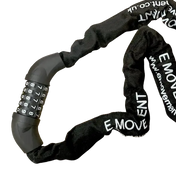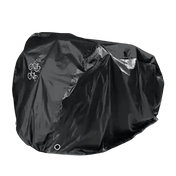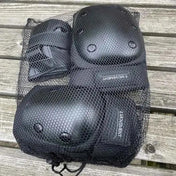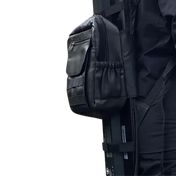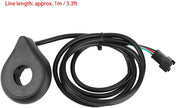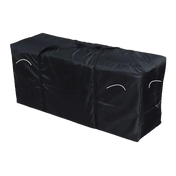Ride Revamp: Bike to eBike Conversion Form
Tell us about your beloved bike and conversion preferences so we can determine the best conversion strategy for you.
Once you fill in the form, our team will get back to you with a quote. If you’re unsure of e-bike jargon, you can scroll down for some tips to create a perfect e-bike.
Electric Bike Conversion Form
Motor and Battery Tips for Bike to eBike Conversion
Here are some important tidbits about the motor and battery of an e-bike. If you want detailed information about what emovement’s bike to electric bike conversion entails, you can go back to this page
What eBike Battery to Opt For
Electrical assistance in a bicycle is only as useful as the range it can provide you. So, selecting the right battery is essential. Of course, larger batteries are more expensive; you’ll have to analyze your needs carefully before selecting an option
What do Voltage and Amp-Hour (Ah) Ratings in eBike Batteries Mean
- Voltage (V) refers to the power output of the electric bicycle’s battery. A higher voltage signifies a more powerful performance. If you’re buying an e-bike in the UK, integrating batteries within the range of 36V to 48V is advisable to navigate various terrains efficiently. At eMovement, all our batteries are 48V.
- Amp-Hour (Ah) represents the capacity or the total amount of energy stored in a battery. A higher Ah rating means the battery can power your e-bike for a longer period. In general, you’ll find batteries of 7-18 Ah in the UK’s market. We offer 7-20Ah (or even 27Ah in some cases).
Here’s the estimated range for a full-suspension electric bike.
Please note that hardtail electric bikes – with only a front suspension fork – will have a longer range than these values.
E-Bike Battery (48V)
Maximum Distance; 100kg bike+rider weight, full-suspension 250W e-bike on plain London roads with PA-Level 1 out of 5
Please note that hardtail bikes have an even higher range because they consume less power.
- 7Ah -35 miles
- 10Ah - 50 miles
- 12.8Ah - 64 miles
- 14Ah - 70 miles
- 20 Ah - 100 miles
- 27 Ah - 135 miles
Range vs. Budget
When investing in an electric bike battery, achieving a balance between range and budget is in your best interest:
- Range: Check whether the battery has sufficient capacity to cover the distances you intend to travel. Riders have to determine the terrains they’ll be navigating, as more challenging terrains require a battery with a higher range.
- Budget: A more robust battery with higher voltage and amp-hour ratings usually comes at a higher cost. It’s crucial to assess your needs and select a battery that provides optimal performance at a cost-effective price. This will guarantee that your purchase aligns with your budget constraints.
What Motor Power to Opt For
Since the motor is the heart of an e-bicycle and its power directly affects the riding experience, you should know which motor wattage to pick for your intended use. Whether you regularly commute, ride for leisure, or tackle various terrains, you need a motor power that aligns with the UK’s legal requirements and delivers optimal performance.
Road-Legality
In the UK, the legal limit for an electric bike motor power is 250 watts, and the maximum assisted speed is 25 kph. Any e-bike surpassing these specifications will require registration, insurance, and a driving license. We recommend ensuring that your electric bike motor adheres to these regulations to avoid potential legal complications and integrate safe usage of roads and paths.
Motor Wattage and Its Effect on Performance
Motor wattage significantly impacts an e-bike’s performance. A higher-wattage motor will provide more power, allowing for improved acceleration and the ability to tackle steep terrains with ease. However, it may also consume more power.
It’s paramount to align the wattage with your cycling needs and preferences. While a more powerful motor might seem appealing, a 250W motor is usually sufficient for everyday commuting, leisurely rides, and even off-roading.
Motor Wattage and Its Effect on Battery Life
Another thing your motor wattage will influence is the battery’s longevity between charges. With a higher wattage motor, your bike is likely to consume battery at a quicker rate, even if it offers a powerful performance. Consequently, the distance you can travel on a single charge will be reduced. Understanding this relationship helps riders select a motor that meets their range requirements without having to frequently charge their vehicle.
Why We Use Rear Hub Motors
We integrate our electric bikes with rear hub motors for their various benefits, such as providing a natural and balanced riding experience. They are much safer than front-hub motors and much more economical than mid-drive motors.
Positioned in the rear wheel, these motors offer smooth acceleration and a stealthy appearance that helps maintain the bike’s traditional aesthetics. Additionally, rear hub motors are versatile, making them suitable for various cycling activities.
What eBike Parts Will We Use?
All the parts that we will use in your bicycles are the exact same ones we use on our bikes. So, rest assured these have been tried and tested for years and offer the perfect blend of fair pricing and performance.




